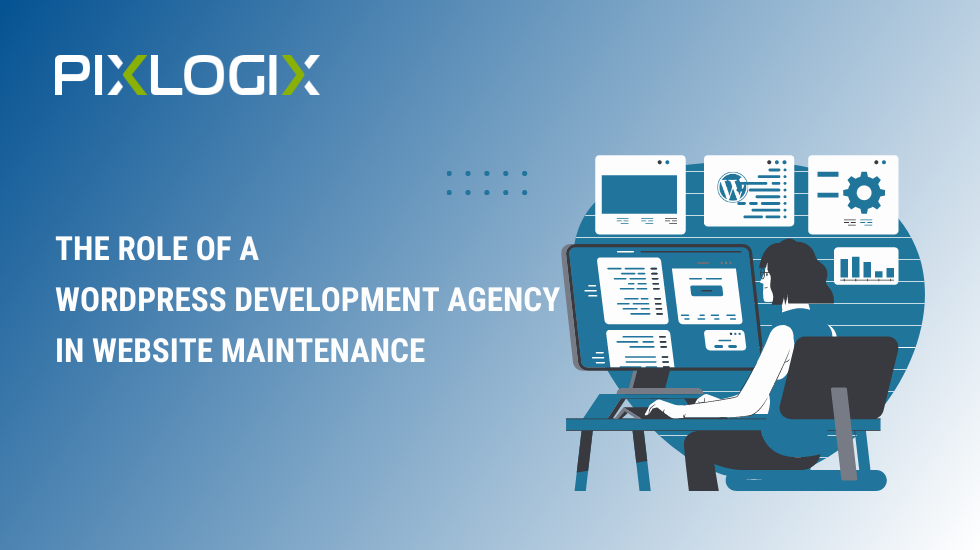Do you know responsive web design is essential for growing your business online? Almost every website wants a responsive website that works on every device, like desktops, mobiles, and tablets.
According to Statista, “Upcoming eras will shift on mobile devices. Thus, you lose many visitors if your website does not fit on every device and browser.
However, creating a website version for each resolution and new device would be impossible for every business. To resolve these issues, you can take help from responsive web developers or web development companies. But before that, let’s understand in-depth responsive Web design and its importance, as well as how you can make a responsive web design by yourself. So, stick to the end.
Responsive Web Design: What It Is?
In web design and development, Responsive web design relates to an approach for developing the interaction website across a wide range of devices and screen sizes. The main goal of responsive design is to ensure that a website can adapt and respond to different devices, such as desktop computers, laptops, tablets, and smartphones, without the need for separate versions or dedicated mobile applications.
Responsive web design uses a combination of flexible grids, fluid layouts, and media queries to adjust the layout and content of a website based on the characteristics of the device being used. This means that regardless of whether a user is accessing the website on a large desktop screen or a small smartphone screen, the website will automatically adjust its layout, images, and text size to fit the screen appropriately.
By implementing responsive design techniques, websites can provide an optimal user experience by ensuring that content remains readable, images are appropriately sized, and navigation is accessible across various devices. This approach eliminates the need for users to constantly zoom or scroll horizontally to view the content, making the website more user-friendly and accommodating to different devices.
Responsive web design has become increasingly important with the rise of mobile devices and the diversity of screen sizes and resolutions. It allows businesses and organizations to reach a wider audience and ensures that their websites remain accessible and visually appealing on all devices, enhancing user engagement and satisfaction.
Responsive Web Design: Why Is It Important?
After understanding the meaning of responsive web design, you better get some idea about how important it is to have a responsive web design for your website. Here we list some major importance of responsive website design for business websites like yours:
#1: Improved User Experience
With the increasing use of mobile devices to access the internet, responsive design ensures that users have a consistent and optimized experience across different screen sizes. The website adapts to the device’s screen, making navigating, reading content, and interacting with the site easier, which leads to higher user satisfaction and engagement.
#2: Increased Reach
Responsive design allows your website to reach a broader audience. Since it adjusts to different devices, users can access your site from desktops, laptops, tablets, and smartphones without any issues. This inclusivity helps you reach more potential customers and ensures that your content is accessible to everyone, regardless of their device.
#3: Cost and Time Efficiency
In the past, businesses often created separate versions of their websites for desktop and mobile devices. This required extra development time, resources, and maintenance. With responsive design, you only need to build and maintain one website that adapts to different devices, reducing development and maintenance costs in the long run.
#4: SEO Benefits
Search engines like Google prioritize responsive websites in their search results. A mobile-friendly site is crucial in search engine optimization (SEO). Responsive design helps improve your website’s SEO performance, leading to better visibility, higher rankings, and increased organic traffic.
#5: Future-Proofing
Responsive design is adaptable and flexible, making your website ready for future devices with different screen sizes and resolutions. As new devices are released, your website will automatically adjust and provide an optimal user experience without requiring significant redesign or redevelopment.
#6: Social Media and Sharing
Responsive design enhances the sharing and social media experience. When users share your website’s content on social media platforms, the responsive design ensures that the shared content looks good and functions properly on different devices. This can lead to increased social engagement and exposure for your brand.
Overall, responsive web design is crucial in today’s digital landscape. It ensures that your website is accessible, user-friendly, and visually appealing across various devices, providing a positive user experience and helping you reach a wider audience. Now, let’s read about the steps or elements that help you in developing a responsive website for your business.
How To Make Responsive Web Design for Businesses?
Creating a responsive web design requires careful planning, thoughtful design decisions, and implementation techniques that adapt the website’s layout, content, and functionality to different devices and screen sizes. Here are the key steps and best practices for making a responsive web design.
Understand Responsive Design Principles
Before diving into the implementation process, it’s essential to grasp the core principles of responsive design:
- Fluid Grids: Use relative units like percentages rather than fixed pixel values for layout elements. This allows them to adjust proportionally based on the screen size.
- Flexible Images and Media: Set images and media to scale dynamically, preventing them from overflowing or appearing too small on smaller screens.
- Media Queries: Apply CSS media queries to apply specific styles based on the device’s screen size, orientation, or other characteristics.
Plan and Structure the Layout
Start by planning and structuring your website’s layout in a way that accommodates different screen sizes. Consider the following:
- Content Hierarchy: Determine the most important content elements and ensure they are prominently displayed on all devices. Prioritize content based on its relevance and importance to the user.
- Breakpoints: Identify the key screen widths your design needs to adapt to. Common breakpoints include those for smartphones, tablets, laptops, and desktops. Consider the unique needs and characteristics of each device type.
- Mobile-First Approach: Begin designing for mobile devices first and then progressively enhance the larger screens’ layout. This ensures a solid foundation for smaller devices and avoids over-complication.
Use CSS Media Queries
Media queries are CSS rules that apply different styles based on the characteristics of the device being used. Use media queries to adjust the layout, typography, images, and other design elements at specific breakpoints. For example:
CSS
Copy code
/* Styles for devices with a maximum width of 600 pixels */
@media (max-width: 600px) {
/* CSS rules for small screens */
}
/* Styles for devices with a width between 601 and 1024 pixels */
@media (min-width: 601px) and (max-width: 1024px) {
/* CSS rules for medium-sized screens */
}
/* Styles for devices with a width larger than 1024 pixels */
@media (min-width: 1025px) {
/* CSS rules for large screens */
}By utilizing media queries, you can selectively apply styles and make adjustments as needed to optimize the user experience on different devices.
Implement Flexible Grids
Create a flexible grid system to ensure that your layout adjusts seamlessly across various screen sizes. This involves using relative units like percentages instead of fixed pixel values for widths and margins.
- CSS Grid: Utilize CSS Grid Layout to create a flexible and responsive grid structure. Define the number of columns, their widths, and the gaps between them. Ensure that the grid items adjust and reflow gracefully as the screen size changes.
- Flexbox: Employ CSS Flexbox to build flexible and fluid layouts. Flexbox enables you to distribute space, align-items, and control their resizing behavior. It is particularly useful for handling navigation menus, columns, and vertically aligning elements.
Handle Images Responsively
Images are a crucial part of any website, and handling them responsively for optimal viewing on different devices is essential.
- CSS Image Property: Use CSS max-width 100% on images to ensure they scale proportionally within their container without overflowing. This prevents images from becoming too large on smaller screens.
- Responsive Images: Implement responsive images using the <picture> element or CSS media queries. Serve different image sizes or resolutions based on the device’s capabilities to optimize load times and bandwidth usage.
Typography And Readability
Ensure that your typography adapts well to different screen sizes, making the content legible and visually appealing.
- Font Size and Line Height: Set font sizes using relative units like em or rem to maintain readability across devices. Adjust line heights accordingly to ensure comfortable reading experiences.
- Breakpoints for Typography: Consider applying specific styles or changing font sizes at different breakpoints to maintain optimal readability. Smaller screens may require larger fonts to compensate for limited space.
Navigation And Interaction
Navigation menus and interactive elements should be designed with touchscreens and smaller screens in mind.
- Hamburger Menus: Implement collapsible menus (often represented by a hamburger icon) for smaller screens. This saves space and provides a clean, accessible way to access navigation options.
- Touch-Friendly Targets: Make interactive elements such as buttons and links large enough to accommodate touch gestures accurately. Ensure there is enough spacing between elements to prevent accidental taps.
Test And Iterate
Regularly test your responsive design across different devices, browsers, and screen sizes to ensure it functions as intended. Make adjustments as needed and iterate on the design based on user feedback and analytics.
- Device Testing: Use real devices or emulators to test your website on various screen sizes and orientations. This helps identify issues and ensure a consistent experience across devices.
- Browser Compatibility: Check how your responsive design performs on different browsers, both on desktop and mobile. Address any compatibility issues that arise.
- Analytics and User Feedback: Analyze user behavior and feedback to identify areas for improvement. Monitor metrics such as bounce rates, time on site, and conversions to gauge the effectiveness of your responsive design.
By following these steps and best practices, you can ensure that your website provides an optimal user experience across a wide range of devices and screen sizes.
Summary
In a nutshell, creating a responsive web design is crucial in today’s digital landscape. Because users can access websites from a variety of devices. Responsive design ensures that websites adapt and provide an optimal viewing and interaction experience on screens of all sizes.
To make a responsive web design, it is important to understand the principles of responsive design, such as fluid grids, flexible images, media queries, and many other elements.
Making a responsive web design involves understanding the principles, planning the layout, utilizing CSS media, considering navigation and many other things. Following these steps, websites can provide an optimal user experience, improve reach, and adapt to the evolving digital landscape.
However, if you want to hire a professional web development company that analyzes your website and gives customized solutions that help you grow online. So, I recommend you contact Pixlogix Infotech Pvt. Ltd. With a dedicated team for multiple technologies; this company can provide you with innovative web designing solutions for all your business requirements. For more details, visit their official website www.pixlogix.com now.


